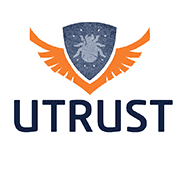End-to-End Testing
End-to-end testing is a software testing technique that is used to test the entire application from start to finish, including all its components and dependencies. The purpose of end-to-end testing is to ensure that the software system meets the business requirements and performs as expected in a real-world scenario.
End-to-end testing involves simulating user scenarios and testing the application’s functionality, performance, and security. It starts with the user’s input and follows the flow of data through the application until the output is produced. This testing technique is essential because it enables the identification of defects in the entire system, including the integration points between different components.
End-to-end testing can be performed using different techniques, such as manual testing, automated testing, or a combination of both. The choice of technique depends on the complexity of the application and the available resources.
The results of end-to-end testing are used to determine whether the software system meets the business requirements and performs as expected. If the system fails the end-to-end tests, it is sent back to development for further testing and bug fixing. Once the system passes the end-to-end tests, it is considered ready for deployment, and the stakeholders can begin using it in their business operations.
UTrust can help our clients by providing comprehensive end-to-end testing services that ensure the reliability, functionality, and usability of their software applications throughout the entire software development lifecycle. Here are some specific ways we can assist our clients with end-to-end testing:
- Test Planning and Strategy: UTrust can work with our clients to develop an end-to-end test plan and strategy that aligns with their business goals and objectives. Our end-to-end test planning and strategy services can help our clients identify testing requirements, prioritize testing activities, and develop test cases and scenarios that cover all aspects of their software applications.
- Test Execution: UTrust can execute end-to-end tests on our clients’ software applications, using manual and automated testing methods. Our test execution services can help our clients identify defects, errors, and other issues, while ensuring that their software applications meet the expected functional requirements and user expectations.
- Integration Testing: UTrust can perform integration testing on our clients’ software applications, ensuring that the different components and modules of their software applications work seamlessly together. Our integration testing services can help our clients identify integration issues, while ensuring that their software applications are reliable and stable.
- User Acceptance Testing: UTrust can perform user acceptance testing (UAT) on our clients’ software applications, ensuring that they meet the expected functional requirements and user expectations. Our UAT services can help our clients enhance user satisfaction, while ensuring that their software applications are fit for purpose and meet their business needs.
- Performance Testing: UTrust can perform performance testing on our clients’ software applications, ensuring that they can handle the expected load and performance requirements. Our performance testing services can help our clients identify performance issues, while ensuring that their software applications are scalable and efficient.
- Security Testing: UTrust can perform security testing on our clients’ software applications, ensuring the security and privacy of user data and transactions. Our security testing services can help our clients mitigate the risks of data breaches, fraud, and other security threats, while enhancing user trust and confidence.
Overall, UTrust’s end-to-end testing services can help our clients ensure the quality, reliability, and performance of their software applications throughout the entire software development lifecycle, while reducing their risks and costs associated with software defects and errors.


